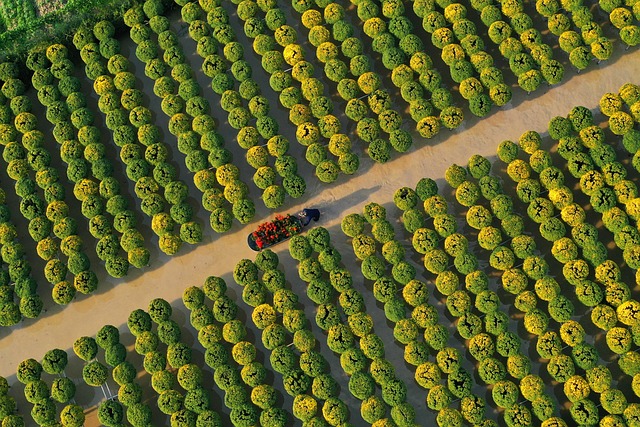aus vs sa
Aus vs SA: A Comprehensive Analysis
Introduction
In the dynamic world of international trade and economic collaboration, the term “Aus vs SA” has emerged as a significant discussion point, particularly within the Australian and South African contexts. This article aims to dissect and explore the nuances of this comparison, offering an in-depth analysis of its historical roots, current standing, and potential implications for the future. By delving into various facets, from economic dynamics to technological innovations and policy frameworks, readers will gain a comprehensive understanding of how these two nations navigate their unique paths and interactions.
Understanding Aus vs SA: Unraveling the Core
“Aus vs SA” refers to the comparison between Australia (commonly known as ‘Aus’) and South Africa (SA), two distinct countries with rich histories and diverse economies. This rivalry or competition is not solely based on geographical proximity but is deeply ingrained in their economic, political, and cultural exchanges. The term highlights the contrasts and similarities that shape their bilateral relationship, making it a fascinating study for analysts, policymakers, and business leaders alike.
Historical Context:
- Australia: A vast island continent with a history of indigenous settlement followed by colonial transformation, Australia became a self-governing nation in 1901. Its economy has traditionally relied on agriculture, mining, and services sectors.
- South Africa: With a complex historical trajectory marked by colonization and apartheid, South Africa gained democracy in 1994. It boasts diverse natural resources, a developing industrial sector, and a unique cultural heritage.
Core Components of Aus vs SA:
- Economic Collaboration: This includes trade agreements, investment flows, and the overall business environment. Both nations have sought to strengthen economic ties through various partnerships and initiatives.
- Political Relations: Diplomatic interactions, international cooperation, and occasional disagreements shape their political landscape. Issues such as trade policies, environmental concerns, and regional security often figure in their discussions.
- Cultural Exchanges: Australia and South Africa share a rich cultural tapestry, with influences from indigenous populations, diverse immigrant communities, and historical legacies. These exchanges impact tourism, arts, and people-to-people connections.
Global Impact and Trends: Shaping the International Arena
The Aus vs SA dynamic extends beyond their bilateral relationship, influencing global trends and regional economies. Here’s a breakdown of its international impact:
-
Trade and Investment: Australia and South Africa are significant players in international trade, particularly within their respective regions. According to a 2022 report by the World Bank, Australia’s export market is diverse, with top exports including iron ore, coal, and educational services. South Africa, on the other hand, leads in gold, platinum, and diamond exports. Bilateral trade agreements like the Australia-South Africa Free Trade Agreement (ASAFTA) have fostered economic growth and investment opportunities.
-
Regional Influence: In their respective continents, these nations play pivotal roles. Australia’s influence is prominent in the Asia-Pacific region, while South Africa is a key actor in the African continent’s economic landscape. They contribute to regional development through trade blocks, infrastructure projects, and knowledge sharing.
-
Global Economic Trends: The global financial crisis of 2008 and subsequent events have impacted both nations’ economies. They have navigated economic downturns through diverse strategies, including resource sector resilience in Australia and a focus on industrial diversification in South Africa. These experiences offer valuable insights into global economic management.
Economic Considerations: Driving Forces and Market Dynamics
The economic aspects of Aus vs SA are multifaceted, shaping their bilateral relationship and international standing.
Market Analysis:
| Sector | Australia | South Africa |
|—|—|—|
| Agriculture | Known for wheat, wool, and livestock exports | Strong in commodities like corn, wheat, and wine |
| Mining | Major exporter of iron ore, coal, and gold | Leads in platinum, diamond, and gold mining |
| Services | Dominant sector with banking, tourism, and education | Growing service sector, including finance, tourism, and IT |
- Investment Patterns: Australia attracts significant foreign direct investment (FDI) due to its stable economy and natural resources. South Africa, despite facing challenges, remains an attractive destination for FDI, particularly in mining, financial services, and renewable energy.
- Economic Systems: Both countries operate within mixed economies, combining private enterprise with government regulation. Australia’s economy leans towards a market-oriented approach, while South Africa has implemented policies to address historical inequalities.
- Monetary Policies: The Reserve Bank of Australia (RBA) and South African Reserve Bank (SARB) play crucial roles in economic stability. They employ monetary tools to manage inflation and support economic growth.
Technological Advancements: Revolutionizing Industries
Technological innovation is a key driver of economic growth, and both Australia and South Africa have made notable strides in this area.
Australian Tech Landscape:
- Renewable Energy: Leading global exporter of solar panels and wind turbines. The nation’s abundant renewable resources drive its clean energy sector.
- Biotechnology: Strong in agricultural biotechnology, with companies focusing on crop improvement and precision farming.
- Digital Technologies: Home to thriving startups and tech hubs, Australia is a hub for software development, cybersecurity, and fintech.
South African Tech Scene:
- Telecommunications: MTN Group, based in South Africa, is a major player in African telecommunications, providing broadband services and mobile connectivity.
- Financial Tech (Fintech): The country has a thriving fintech industry, offering digital banking solutions and mobile money transfer services.
- Artificial Intelligence (AI) Research: South African universities are at the forefront of AI research, contributing to global advancements in machine learning and natural language processing.
These technological developments not only foster domestic growth but also enhance international collaboration, with joint ventures and partnerships driving innovation across borders.
Policy and Regulation: Shaping the Business Environment
The policy frameworks of Australia and South Africa significantly impact their economic landscapes and bilateral interactions.
Key Policies:
- Australia: Known for its stable political environment and business-friendly policies, Australia offers a transparent regulatory system. Its tax policies and intellectual property rights (IPR) protections are favorable for investors. The country’s competition laws ensure fair market practices.
- South Africa: The South African government has implemented policies to address historical economic disparities. These include black economic empowerment (BEE) initiatives, which promote inclusive growth. The nation’s energy policies focus on renewable sources, and its environmental regulations are stringent.
Regulatory Alignment: Bilateral efforts to align policies have improved the investment climate. ASAFTA, for instance, streamlined customs procedures and reduced tariffs, fostering easier trade. Additionally, both countries are members of various international organizations, such as the World Trade Organization (WTO), promoting global standards and cooperation.
Challenges and Criticisms: Overcoming Barriers
Despite their progress, Australia-South Africa relations face challenges that require strategic attention.
Main Concerns:
- Inequality and Social Disparities: Despite efforts, economic inequality persists, particularly in South Africa, where historical injustices still impact opportunities. Addressing this requires targeted policies to empower marginalized communities.
- Trade Imbalances: Australia often exports resources to South Africa, creating a trade imbalance. Diversifying export markets is crucial for both nations to ensure mutually beneficial trade.
- Political Disagreements: Occasionally, political differences arise, impacting cooperation. Constructive dialogue and diplomatic efforts are essential to resolve these issues.
- Environmental Concerns: While both countries prioritize environmental sustainability, differing approaches may lead to disagreements. Collaborating on green initiatives can foster a stronger bond.
Proposed Solutions:
- Enhance educational exchanges and skills development programs to bridge knowledge gaps.
- Promote joint ventures and public-private partnerships to drive economic growth and create shared value.
- Foster dialogue through regular high-level meetings and establish mechanisms for dispute resolution.
- Collaborate on climate change initiatives, leveraging each other’s strengths in renewable energy and environmental technology.
Case Studies: Successful Collaborations
Real-world applications of Aus vs SA collaboration offer valuable insights into successful strategies.
Case Study 1: Clean Energy Partnership
Australia’s SunTech Solutions and South Africa’s GreenEnergy Innovations joined forces to establish a solar energy project in rural South Africa. This partnership provided clean energy access to off-grid communities, creating jobs and reducing carbon emissions. The project was a win-win, demonstrating the potential for technological collaboration to drive social impact.
Case Study 2: Agricultural Technology Transfer
Australian agricultural tech company AgriTech Solutions partnered with South African farmers to introduce precision farming techniques. Through knowledge sharing and technology transfer, they improved crop yields and reduced water usage. This collaboration highlighted the power of technology in enhancing agricultural sustainability.
Future Prospects: Charting a Course Ahead
Looking ahead, the Aus vs SA dynamic is poised for further growth and development, shaped by emerging trends and strategic considerations.
Potential Growth Areas:
- Green Technologies: With a shared commitment to environmental sustainability, both nations can collaborate on cutting-edge green technologies, such as carbon capture, storage, and advanced recycling.
- Digital Economy: The expanding digital landscape offers opportunities for e-commerce, fintech, and cyber-security partnerships, leveraging each country’s strengths in these sectors.
- Healthcare Innovation: Australia’s medical research and South Africa’s diverse patient population can drive pharmaceutical and healthcare technology collaborations.
Emerging Trends to Watch:
- Regional Integration: Strengthening regional blocs like the Southern African Development Community (SADC) and Association of Southeast Asian Nations (ASEAN) will impact bilateral relations, creating new trade and investment opportunities.
- Decarbonization: The global shift towards net-zero emissions presents a significant challenge and opportunity for both countries to collaborate on low-carbon technologies and energy solutions.
- Digital Currency: Australia’s exploration of digital currencies and South Africa’s interest in blockchain technology could lead to innovative financial partnerships.
Conclusion: A Dynamic Relationship with Global Implications
The Aus vs SA comparison is not merely an academic exercise but a dynamic reality with far-reaching consequences. This analysis has revealed the complexity and significance of their relationship, shaped by history, economics, technology, and politics. By navigating challenges and embracing opportunities, these nations can forge a path towards enhanced collaboration, mutual prosperity, and global leadership.
The future holds immense potential for growth, innovation, and shared success, with Aus vs SA serving as a testament to the power of international cooperation and cultural exchange. As the world continues to evolve, their bilateral relationship will remain a fascinating study in diplomacy, economics, and cultural intertwining.
FAQ Section: Answering Common Queries
Q: How does the Aus vs SA comparison differ from other trade relationships?
A: This comparison is unique due to the historical connections, diverse economies, and strategic geographic locations of Australia and South Africa. Their relationship transcends traditional trade agreements, encompassing cultural exchanges and political collaborations that shape regional dynamics.
Q: What are the main benefits of ASAFTA (Australia-South Africa Free Trade Agreement)?
A: ASAFTA has liberalized trade by reducing tariffs, simplifying customs procedures, and promoting investment flows. It has facilitated access to markets for agricultural products, minerals, and services, boosting economic growth in both nations.
Q: How do environmental policies impact the Aus vs SA relationship?
A: Environmental issues are a key area of cooperation and disagreement. While both countries have renewable energy initiatives, differing approaches to land use and conservation create challenges. Collaborating on sustainable development goals can strengthen their partnership and contribute to global environmental efforts.
Q: What role does technology play in enhancing Aus vs SA collaboration?
A: Technology serves as a catalyst for growth, enabling digital trade, financial inclusion, and knowledge transfer. Joint ventures in tech sectors like renewable energy, fintech, and agricultural technology have the potential to drive innovation and create shared value.
Q: How can Aus vs SA address trade imbalances?
A: Diversifying export markets is crucial. Australia can encourage South African exports through targeted marketing campaigns and investment incentives. Bilateral efforts to promote each other’s industries can lead to more balanced trade relationships, fostering mutual economic growth.













